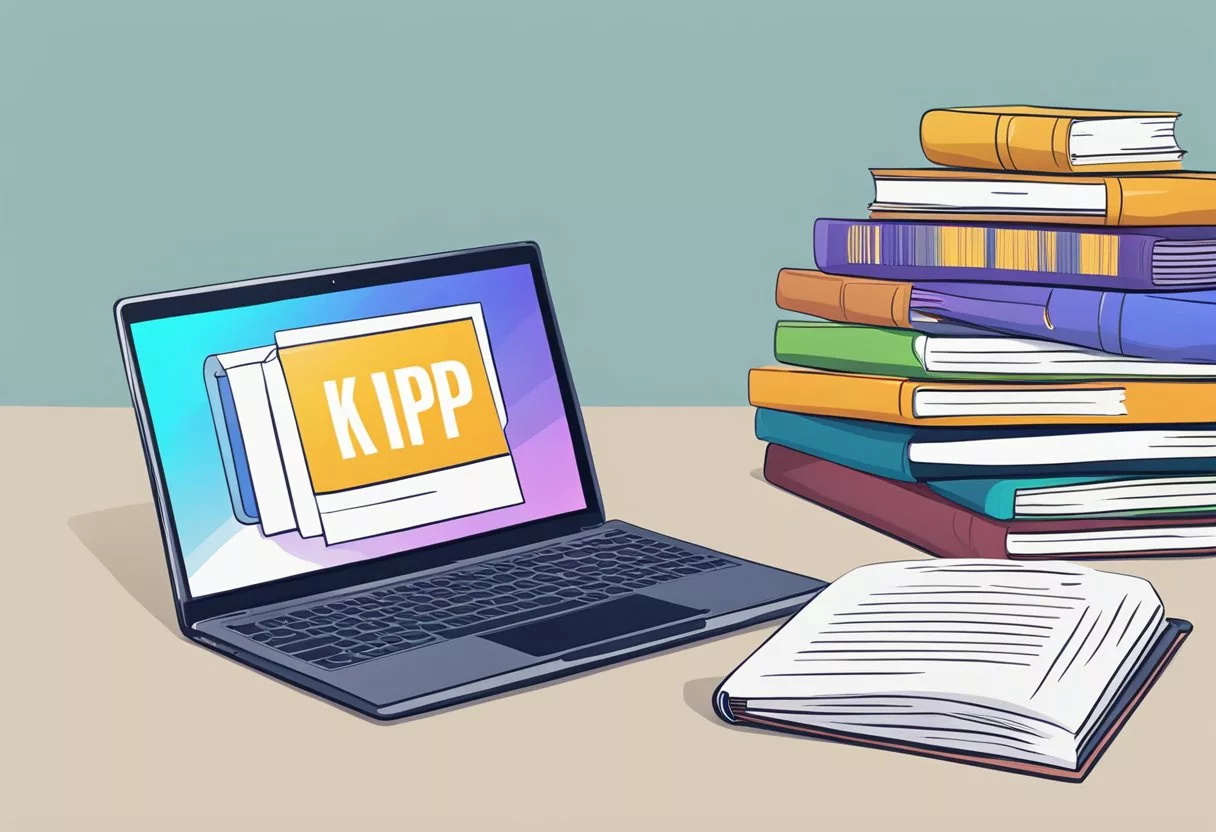ChatGPT is a powerful tool that can help authors and publishers market their Amazon KDP books more effectively. By generating ideas, improving writing quality, and personalizing customer interactions, ChatGPT can be a valuable asset for any marketing strategy. In this article, we’ll explore how to use ChatGPT to help market your Amazon KDP books.
ChatGPT can be used to begin crafting your book’s marketing message. This involves creating a compelling book description that highlights the unique features and benefits of your book. Integrating ChatGPT into your marketing strategy can help you optimize your book description, create compelling ad copy, and personalize customer interactions.
Understanding ChatGPT
ChatGPT can help authors and publishers on Amazon KDP with book marketing, writing, and platform-related questions.
Users can ask ChatGPT questions related to their Amazon KDP books, and the chatbot will provide relevant and helpful responses.
We will cover some detailed prompts in this article (so scroll down), but some examples of basic questions that ChatGPT can also help with include:
- How can I improve my book’s description on Amazon?
- What are some effective book marketing strategies for Amazon KDP?
- How can I optimize my book’s keywords for better discoverability on Amazon?
ChatGPT can also help with more general writing-related questions, such as grammar and punctuation. It can provide suggestions on how to improve sentence structure and word choice.
Setting Up Your Amazon KDP Account

Before you can start marketing your books on Amazon KDP, you need to set up an account. Setting up an account is simple and straightforward. Here are the steps you need to take:
- Go to the KDP website and click on the “Sign up” button.
- Enter your email address and create a password.
- Fill in your personal information, including your name and address.
- Enter your payment information. You will need to provide a bank account or credit card to receive payments from Amazon.
- Agree to the terms and conditions and click “Finish.”
Once you have set up your account, you can start uploading your books to Amazon KDP.
It is important to note that Amazon KDP has specific guidelines for formatting your books. Make sure to read the KDP Publishing Guidelines before uploading your book. This will ensure that your book meets Amazon’s standards and is eligible for publishing.
In addition to formatting guidelines, Amazon KDP also has specific rules for book cover images. Make sure to read the KDP Cover Creator Guidelines before creating your book cover. This will ensure that your cover meets Amazon’s standards and looks professional.
Crafting Your Book’s Marketing Message

Crafting a compelling marketing message is a crucial step in promoting your book on Amazon KDP.
To create a marketing message that resonates with your target audience, consider the following tips:
- Identify your book’s unique selling proposition (USP) – What sets your book apart from others in its genre? Is it your writing style, your characters, or your plot? Highlight your book’s USP in your marketing message to grab your potential readers’ attention.
- Use persuasive language – Use language that evokes emotion and paints a vivid picture of what readers can expect from your book. Use power words like “compelling,” “gripping,” or “heart-wrenching” to make your marketing message more persuasive.
- Keep it concise – Your marketing message should be brief and to the point. Avoid lengthy descriptions or convoluted sentences that can confuse or turn off potential readers.
- Include social proof – If your book has received positive reviews or awards, include them in your marketing message. Social proof can help establish your credibility and convince readers to give your book a chance.
Example ChatGPT Prompts:
“Can you help me identify the unique selling proposition (USP) of my fantasy novel? Here’s a brief summary: [Insert summary].”
“I’m looking for persuasive and emotive words to describe my romance novel in its Amazon KDP description. Can you suggest some based on this plot outline: [Insert plot outline]?”
Integrating ChatGPT into Your Marketing Strategy
Here are some ways authors can integrate ChatGPT into their marketing strategy:
Looking for more niche ideas: We have the largest collection of how to make money with ChatGPT articles on the internet here
- 10 Ways Business Analysts Can Make Side Income Using ChatGPT
- 10 Ways Travel Enthusiasts can make side income Using ChatGPT
- 35 ways to use the Code Interpreter of ChatGPT to make money
- 10 Ways Moms Can Make Side Income Using ChatGPT
- 10 Ways Car Lovers Can Make Side Income Using ChatGPT
- 10 Ways Artists can make extra money Using ChatGPT
- 10 Ways Architects Can Make Side Income Using ChatGPT
- 10 Ways Americans can make money using ChatGPT
- 10 Ways Tech Geeks can make side money Using ChatGPT
Content Creation
One of the most significant advantages of ChatGPT is its ability to generate content. With ChatGPT, authors can create compelling, high-quality content for their books, including blog posts, social media posts, and email newsletters.
By using ChatGPT to generate content, authors can save time and resources while still producing high-quality content. They can also use ChatGPT to create content that is optimized for specific keywords and phrases, which can help drive traffic to their Amazon KDP books.
“Can you help me draft a blog post that highlights the main themes of my book, using SEO-friendly language? Here are the details: [Insert book details].”
“I’m preparing an email newsletter to promote my book. Can you suggest an outline that includes teasers of the content and calls to action?”
Social Media Engagement
Authors can also use ChatGPT to engage with their audience on social media. ChatGPT can help authors create engaging social media posts that are tailored to their audience’s interests and preferences.
Authors can also use ChatGPT to create social media ads that are optimized for specific demographics. By using ChatGPT to create social media ads, authors can increase their reach and engagement on social media, which can help drive traffic to their Amazon KDP books.
Example ChatGPT Prompts:
“What are some engaging and interactive post ideas I can use to promote my mystery novel on Instagram and Twitter?”
“Can you help me create a sample social media ad copy for Facebook that targets fans of historical fiction, emphasizing my book’s unique aspects?”
Email Campaigns
Finally, authors can use ChatGPT to create email campaigns that are tailored to their audience’s interests and preferences. By using ChatGPT to create email campaigns, authors can increase their open and click-through rates, which can help drive traffic to their Amazon KDP books.
Authors can also use ChatGPT to create email subject lines that are optimized for specific keywords and phrases. By using ChatGPT to create email subject lines, authors can increase their email open rates, which can help drive traffic to their Amazon KDP books.
Example ChatGPT Prompts:
“I need help crafting an email campaign series to build anticipation for my upcoming book launch. What should the first three emails focus on?”
“How can I personalize email content to engage different segments of my audience more effectively, based on their interests in specific book genres?”
Optimizing Your Book Description with ChatGPT
One of the most important elements of any book listing on Amazon KDP is the book description. A well-crafted book description can make the difference between a potential reader clicking “buy” or moving on to another book. ChatGPT can help authors optimize their book descriptions by generating compelling language that speaks directly to the reader.
Here are some tips for using ChatGPT to optimize your book description:
- Identify your target reader. Before using ChatGPT to generate your book description, it’s important to have a clear understanding of who your target reader is. What are their interests? What motivates them to read? What are their pain points? Once you have a clear picture of your target reader, you can use ChatGPT to generate language that speaks directly to them.
- Highlight the benefits of your book. ChatGPT can help authors identify the key benefits of their book and communicate them in a compelling way. For example, if your book is a self-help guide, ChatGPT can help you identify the specific ways in which your book will help readers improve their lives. Use bold or italic formatting to make these benefits stand out in your book description.
- Include a call to action. A call to action (CTA) is a statement that encourages the reader to take a specific action, such as buying your book. ChatGPT can help authors craft a compelling CTA that encourages readers to take action. For example, you could use ChatGPT to generate language that encourages readers to “click the buy button now and start transforming your life!”
By using ChatGPT to optimize your book description, you can create a compelling listing that speaks directly to your target reader and encourages them to buy your book.
Example ChatGPT Prompt:
“Can you help me optimize my book description to appeal to my target audience of young adults who love fantasy adventures? I want to highlight the benefits of reading my book, such as escapism and experiencing a thrilling adventure, and conclude with a compelling call to action. Here’s the basic summary of my book: [Insert Summary].”
Creating Compelling Ad Copy
One of the most important aspects of marketing your Amazon KDP books is creating compelling ad copy that resonates with your target audience. ChatGPT can be an invaluable tool in generating persuasive ad copy that converts.
Using ChatGPT, you can create highly personalized ad copy that speaks directly to each segment of your audience. By providing detailed prompts such as the campaign theme, target audience, and landing page, ChatGPT can provide valuable insights and recommendations for creating ad copy that is tailored to your specific goals.
To make your ad copy stand out, consider using emotional language and highlighting unique selling points. For example, if your book is a thriller, you might use ad copy that creates a sense of urgency and suspense. If your book is a self-help guide, you might use ad copy that emphasizes the benefits of your book and how it can help your readers.
In addition to using ChatGPT to generate ad copy, it is important to combine its guidance with your own understanding of your target audience and industry. Use ChatGPT as a tool to enhance your ad copywriting efforts and create compelling advertising that resonates with your readers.
Example ChatGPT Prompt:
“I’m launching an ad campaign for my latest romance novel on social media. Could you help me create ad copy that uses emotional language to highlight the novel’s unique selling point—the transformative power of love—and includes a sense of urgency? The target audience is women aged 25-45 who enjoy heartwarming and uplifting stories.”
You may also like 📖
- Ultimate Guide: using ChatGPT to Plan your next Trip
- Unleashing the power of ChatGPT to master Chess
- How to use ChatGPT to reply to emails in your 9-5 job like a pro
- Writing the Perfect Cold Email with ChatGPT: A Modern Spin on the AIDA Model
- How to use ChatGPT to get unique Gift Ideas for friends
- How to use ChatGPT to Plan the Perfect Kids Birthday Party
- How to use ChatGPT to create custom Meal Plans that work
- How ChatGPT can help you Memorize Anything quickly
- How ChatGPT can help you Write your Fiction novel 10x faster
- How to use ChatGPT to Summarize Books
Personalizing Customer Interactions

ChatGPT can help authors personalize their customer interactions on Amazon KDP. By using ChatGPT, authors can generate automated responses that are tailored to each customer’s unique needs and preferences.
One way to personalize customer interactions is by using ChatGPT to create customized emails for readers who have purchased an author’s book. For example, an author can use ChatGPT to generate a thank you email that includes personalized recommendations for other books the reader might enjoy based on their purchase history. This can help authors build a loyal following and increase sales.
Another way to personalize customer interactions is by using ChatGPT to respond to customer reviews. By analyzing the language and sentiment of a review, ChatGPT can generate a response that is tailored to the specific feedback provided by the customer. This can help authors address any issues or concerns raised by customers and improve their overall reputation on Amazon KDP.
Example ChatGPT Prompt:
“I’d like to personalize my interactions with customers who’ve purchased my detective series on Amazon KDP. Could you help me draft a thank you email that includes personalized book recommendations based on their interest in mystery and detective genres? I also want to respond thoughtfully to a recent review that praised the complex characters but criticized the pacing. How should I address this feedback?”
Analyzing Customer Feedback with ChatGPT

One of the most valuable uses of ChatGPT for Amazon KDP authors is to analyze customer feedback. By analyzing customer feedback, authors can gain insights into their readers’ preferences and opinions, which can help them improve their books and marketing strategies.
To analyze customer feedback with ChatGPT, authors can follow these simple steps:
- Collect feedback: The first step is to collect feedback from readers. This can be done by asking for reviews on Amazon or other platforms, or by sending out surveys to readers. Once the feedback is collected, it can be compiled into a single document.
- Input feedback into ChatGPT: The next step is to input the feedback into ChatGPT. This can be done by copying and pasting the feedback into the prompt window, or by uploading the feedback as a text file.
- Run analysis: Once the feedback is inputted into ChatGPT, authors can run various analyses to gain insights into their readers’ preferences and opinions. This can include sentiment analysis, topic modeling, and keyword extraction.
- Interpret results: After the analysis is complete, authors can interpret the results to gain insights into their readers’ preferences and opinions. This can help authors identify areas where they can improve their books and marketing strategies.
Example ChatGPT Prompt:
“I’ve collected a batch of customer feedback from my recent fantasy novel’s reviews on Amazon and a reader survey I conducted. Could you help me analyze this feedback to identify common themes, sentiment (positive, neutral, negative), and specific areas for improvement or strengths in my writing and story? Here’s the compiled feedback: [Insert Feedback].”
Leveraging ChatGPT for SEO

ChatGPT is a powerful tool for optimizing search engine rankings. It can help authors market their Amazon KDP books by generating related keywords, researching keywords, and paraphrasing text to include effective keywords while providing new information.
One way to use ChatGPT for SEO is to generate related keywords. Keyword optimization is a critical component of SEO, and finding the right keywords can be a difficult task. ChatGPT can make this process easier by providing authors with a pool of related keywords that they can use to increase their book’s visibility on Amazon.
ChatGPT can also help authors research keywords by providing information on the popularity and relevance of different keywords. This information can help authors choose the best keywords for their book’s title, description, and metadata.
Another way to leverage ChatGPT for SEO is to use it to paraphrase text. Paraphrasing can help authors include effective keywords while providing new information to readers. ChatGPT can paraphrase and modify text to retain effective keywords while providing new information.
Example ChatGPT Prompt:
“I’m looking to optimize the search engine visibility of my self-help book on Amazon KDP. Can you help me generate a list of related keywords based on the book’s main topics of personal growth and resilience? Additionally, could you assist in researching the popularity and relevance of these keywords and suggest ways I can integrate them into my book’s title, description, and metadata for better SEO?”
You may also like 📖
Monitoring and Adjusting Your Strategy

Once you have implemented your ChatGPT strategy for marketing your Amazon KDP books, it is important to monitor its effectiveness and make adjustments as necessary. This will ensure that you are getting the most out of your efforts and maximizing your return on investment.
One way to monitor your strategy is by tracking your book’s sales and reviews. You can use Amazon’s KDP dashboard to view your sales data and customer reviews. By analyzing this data, you can determine which marketing tactics are working and which ones need to be adjusted.
Another way to monitor your strategy is by using analytics tools to track your website traffic and engagement. Google Analytics is a popular tool that allows you to track your website’s performance and see how visitors are interacting with your content. By analyzing this data, you can determine which pages and content are most popular and adjust your strategy accordingly.
It is important to remember that marketing is an ongoing process, and your strategy should be adjusted regularly to keep up with changing market trends and consumer behavior. By monitoring your strategy and making adjustments as necessary, you can ensure that you are staying ahead of the competition and maximizing your book’s potential.
Final Thoughts

In conclusion, ChatGPT is a powerful tool that can help authors and publishers market their Amazon KDP books more effectively. By using the language model to generate profitable keywords, authors can increase their visibility on Amazon and attract more readers to their books.
ChatGPT can also help authors get answers to their questions about book marketing, writing, and the Amazon KDP platform. By chatting with the AI-powered tool, authors can get quick and accurate answers to their queries without having to spend hours researching on their own.



